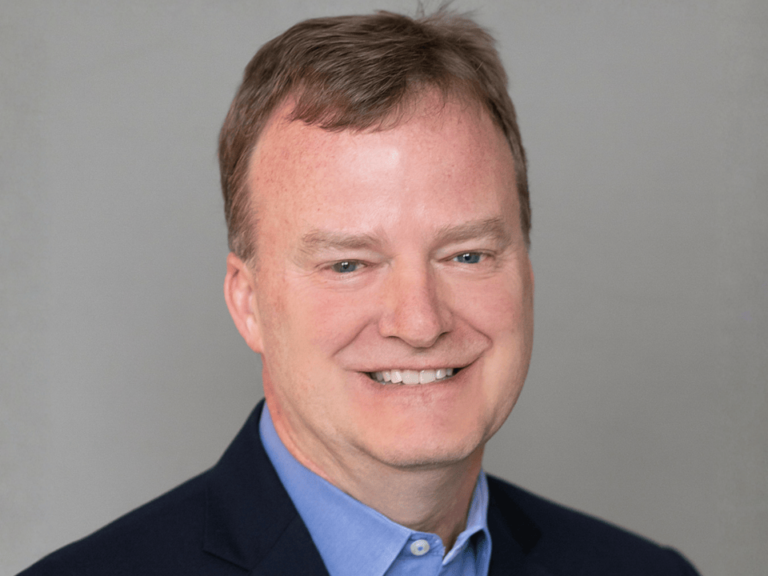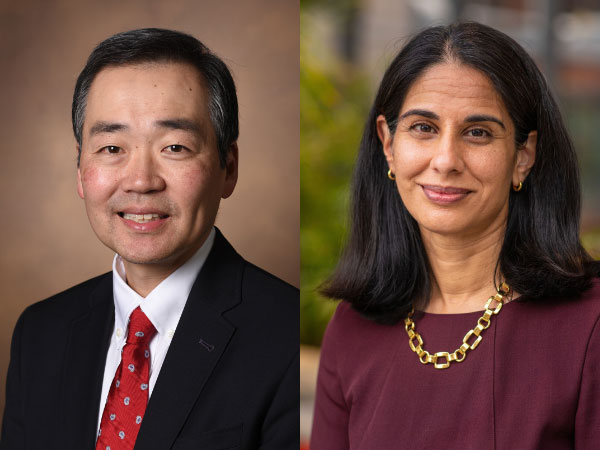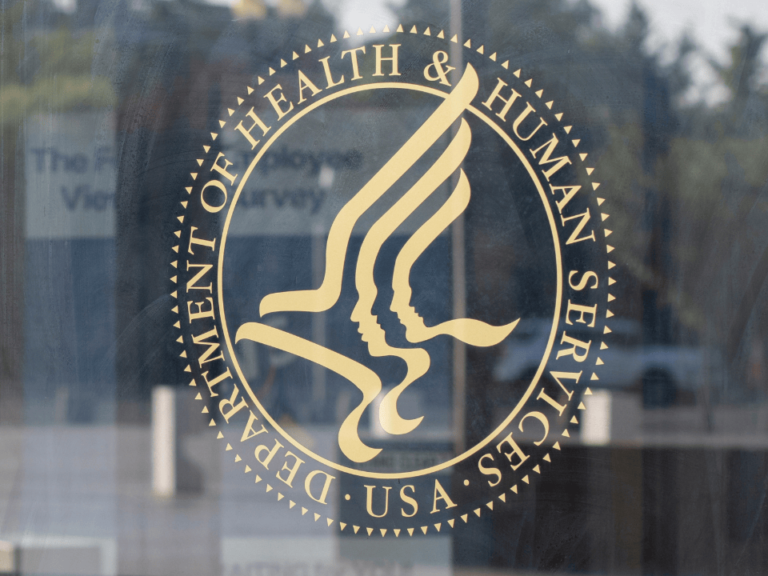Moving away from recommendations dating back to 2009, the U.S. Preventive Services Task Force now states that women should start biennial screening for breast cancer at age 40—instead of 50—a change that experts say is based on new, inclusive science.
“Patients and their clinicians should start screening beginning at age 40,” Wanda Nicholson, vice chair of USPSTF, said to The Cancer Letter. “So, if someone is 40 today, this is the day you start your mammogram screening—and welcome to the world of mammogram screening and saving lives.”
The task force’s draft recommendation was published May 9. The public comment period continues through June 5.
The breast cancer screening controversy has been going on for five decades, and since the turn of the millennium, USPSTF has issued three breast cancer screening recommendations: in 2002, 2009, and 2016.
The latest recommendation sticks with the task force’s biennial screening recommendations from 2016 and 2009. However, those recommendations were not enforced and are not a part of the Affordable Care Act.
In effect, the 40-and-up age range of the current draft recommendation harks back to the task force’s 2002 recommendation, i.e., the version utilized by the Department of Health and Human Services.
There is, however, an important distinction: the 2002 guideline recommends either annual or biennial for women aged 40 and older, whereas the latest draft exclusively recommends biennial screening for women aged 40 to 74.
“Available evidence suggests a more favorable trade-off of benefits vs. harms with biennial vs. annual screening,” USPSTF said in its statement on practice considerations. “A strategy of screening annually from ages 40 to 74 years would result in about 50% more false-positive results and 50% more overdiagnosed cases of breast cancer, compared with biennial screening for all women.”
USPSTF is assigning a “B” grade to the draft recommendation, indicating that its expert panel members have determined with moderate to high certainty that the net benefit of breast screening is moderate to substantial, even for women between ages 40 and 49.
If someone is 40 today, this is the day you start your mammogram screening—and welcome to the world of mammogram screening and saving lives.
Wanda Nicholson
Prior to this update, the 2016 and 2009 versions also recommended biennial screening, with a “B” grade only for women aged 50 to 74. At the time, USPSTF assigned a “C” for biennial screening in women between the ages of 40 to 49—a grade that sparked two decades worth of political firestorms—stating that women in this age group should make individual decisions to start screening mammography, because the “number of deaths averted is smaller than that in older women and the number of false-positive results and unnecessary biopsies is larger.”
So, what is the impetus for the “expansion” of the age range in the latest recommendation?
“What we’ve done now in our updated 2023 recommendation is that we have additional science,” Nicholson said. “So, that is the change that we’re seeing in terms of the magnitude of benefit that has enabled us to broaden our recommendation to include starting women at age 40—all women—at age 40.”
A conversation with Nicholson, who is also the senior associate dean for diversity, equity, and inclusion and professor of prevention and community health at the Milken Institute School of Public Health at George Washington University, appears here.
USPSTF’s updated draft recommendation for breast cancer screening comes at a time when culture wars at the intersection of fundamentalist religious beliefs and evidence-based preventive care mandates are playing out in federal courts.
On March 30, Texas District Judge Reed O’Connor issued a ruling that guts the Affordable Care Act’s zero cost-sharing mandate, effectively allowing insurance companies to reinstate copays for preventive services that have received an “A” or “B” grade from the task force since 2010—a move experts say will reduce uptake of cancer screening and result in excess cancer-related deaths at the population level (The Cancer Letter, March 31, 2023).
Historically, of the “A” and “B” cancer-related recommendations issued by USPSTF, breast cancer screening guidelines have elicited the most acrimonious polemic from academics, advocates, and politicians.
Indeed, the battle lines over the 2023 draft recommendation have been drawn.
“I am concerned that the USPSTF’s risk-benefit calculation in this regard is off-base,” Rep. Debbie Wasserman Schultz (D-FL) said in a statement May 9. “Unfortunately, the USPSTF only recommends biennial mammograms for average risk women beginning at age 40, rather than annual screenings.
“I also am concerned with the USPSTF’s decision not to recommend coverage for supplemental or secondary screening for women with dense breasts. Just as mammograms may result in false positives, they also may result in false negatives, particularly in women with dense breasts. For these women, additional screening is vital.
“As a breast cancer survivor who was diagnosed early at age 41, I know firsthand the importance of having access to annual mammograms. Annual mammograms are a lifesaving tool,” Wasserman Schultz said. “I am disappointed that it has taken over a decade for the USPSTF to put out incomplete guidance.”
In 2009, USPSTF’s tweak to the 2002 recommendation—the assignment of a “C” grade to mammography in women ages 40 to 49—was so politically radioactive that it could have jeopardized the passage of the ACA.
In December 2009, Congress passed the Women’s Health Amendment, in part to prevent USPSTF’s 2009 update to the guidelines from taking effect (The Cancer Letter, April 24, 2015).
Thus, as if steered by strange turns of fate, the USPSTF recommendation on breast cancer screening appears to be the only cancer screening guideline that isn’t affected by the O’Connor ruling in Braidwood Management v. Becerra, thanks to political events over 13 years ago that required HHS to utilize the 2002 recommendation on breast cancer screening, which predates the ruling’s March 23, 2010 cutoff date.
Today, the stakes are higher than ever. Legal scholars expect the case to reach the Supreme Court. At this writing, the Biden administration is asking O’Connor to stay his ruling pending appeal to avoid disrupting coverage of preventive care services for more than 150 million Americans.
On April 20, O’Connor ordered HHS and other federal agencies to provide proof to support that estimate and “explain what evidence they have that insureds will lose their coverage” since the majority of insurance providers aren’t making immediate changes in coverage policy.
The defendants have also filed a parallel motion in the Fifth Circuit Court of Appeals seeking a stay of O’Connor’s ruling. As a result, depending on the scope of the appellate court’s jurisdiction over the case, the authority to issue a stay may no longer be within the District Court’s power, according to a May 2 order issued by O’Connor that instructs HHS and other defendants to brief him on whether his court retains jurisdiction over the motion to stay the March 30 ruling.
It remains to be seen whether HHS intends—or, in fact, has the authority—to adopt this latest USPSTF update to breast cancer screening after the draft guideline is finalized, given the turbulent political and legal environment.
In a worst-case scenario, if O’Connor’s ruling is allowed to stand and impact coverage for breast cancer screening, more than 22 million women could lose access to no-cost mammogram screenings, according to a new analysis prepared by the Urban Institute with support from the Robert Wood Johnson Foundation.
Using data from a 2018 national household survey, the analysis finds that 22.2 million women ages 50 to 64 were enrolled in a private health plan and were eligible for a free mammogram under the ACA.
More than 60% of these women (13.4 million) reported having a mammogram within the previous two years.
The study also found that:
- When not covered by insurance, mammograms can cost patients up to $560 in out-of-pocket expenses.
- Of the women surveyed with private health coverage, 2.4 million, or 11%, already reported delaying or skipping medical care due to cost in the prior year.
- Preventive screenings will drop if cost-sharing protections cease to exist.
“Eliminating access to no-cost preventive screenings for breast cancer and other serious diseases would be a major step backward,” Katherine Hempstead, senior policy adviser at the Robert Wood Johnson Foundation, said in a statement May 10. “Under the protections of the Affordable Care Act, millions of women benefited from life-saving mammogram screenings as a routine part of preventive health care, and they should continue to do so. Policymakers should protect preventive health screenings at no cost to patients.”
For now, insurance companies continue to be legally required to fully cover mammograms every year for women who want them.
“Coverage decisions involve considerations beyond the evidence about clinical benefit, and in the end, these decisions are the responsibility of payers, regulators, and legislators,” USPSTF said in a statement May 9.
USPSTF’s mission charges its independent, volunteer panel of 16 outcomes specialists to make recommendations solely based on the totality of evidence, unhampered by considerations about insurance coverage and cost.
“The important thing here is the task force is saying, ‘Okay, you can do it starting at age 40, but realize the potential risks. Just as you see potential benefits, realize there are potential risks, realize there are unknowns,” Otis Brawley, Bloomberg Distinguished Professor of Oncology and Epidemiology at Johns Hopkins University, said to The Cancer Letter. “You can quote me as saying I’m pro-choice. I think it’s fine to let people make a personal decision.”
A guest editorial by Brawley appears here.
The American Cancer Society recommends that women with an average risk of breast cancer should undergo regular screening mammography starting at age 45 years. It suggests that women ages 45 to 54 years should be screened annually, that women age 55 years or older should transition to biennial screening or have the opportunity to continue screening annually, that women should have the opportunity to begin annual screening between the ages of 40 and 44 years, and that women should continue screening mammography as long as their overall health is good and they have a life expectancy of 10 years or longer.
USPSTF did not identify any RCTs designed to test the comparative effectiveness of different ages to start or stop screening that reported morbidity, mortality, or quality of life outcomes, relying instead on modeling estimates.
“The task force has traditionally only made a recommendation when there was at least one high-quality prospective randomized trial that showed that there was a benefit to support the recommendation,” Brawley said. “This strays from that policy.
“I was one of the co-authors of the ACS recommendation to start screening at 45,” Brawley said. “And in that recommendation, we very clearly noted that we don’t have clinical trials to show that there is a benefit.
“However, we noted that the mortality rates and incidence rates of breast cancer for women ages 45 to 49 were very similar to ages 50 to 54.”
USPSTF: Starting at 40 saves more lives
A decision analysis conducted for USPSTF concluded that biennial screening starting between the ages of 40 and 74 would lead to 1.3 additional breast cancer deaths averted per 1,000 women screened over a lifetime of screening for all women, compared with biennial screening from ages 50 to 74 years.
“It corresponds to that overall 20% mortality reduction for all women,” Nicholson said. “By following this updated guideline, we can obtain up to a 20% breast cancer mortality reduction. And that is very, very impactful on the lives of all women.”
Among the factors that led the USPSTF to conclude that screening mammography in women ages 40 to 49 years has a moderate benefit in reducing the risk of breast cancer mortality: The collaborative modeling data also estimated that screening benefits for Black women are similar for breast cancer mortality reduction and greater for life-years gained and breast cancer deaths averted compared with all women.
According to USPSTF, biennial screening starting at 40 would result in 1.8 additional breast cancer deaths averted per 1,000 women screened for Black women. Epidemiologic data has shown that the incidence rate of invasive breast cancer for 40- to 49-year-old women has increased an average of 2.0% annually between 2015 and 2019, a higher rate than in previous years.
The task force also concluded that Black women are approximately 40% more likely to die from breast cancer compared with white women.
Despite having a similar or higher rate of mammography screening, Black women are more likely to be diagnosed with breast cancer beyond stage 1 than other racial and ethnic groups, are more likely to be diagnosed with triple-negative cancers (i.e., ER-, PR-, and HER2-), which are more aggressive tumors, compared with white women.
To illustrate: In the nation’s capital, Black Washingtonians are nearly 3.3 times more likely to die from breast cancer, compared to their white counterparts, according to 2015-2019 data from the U.S. Cancer Statistics Working Group.
The important thing here is the task force is saying, ‘Okay, you can do it starting at age 40, but realize the potential risks. Just as you see potential benefits, realize there are potential risks, realize there are unknowns.’
Otis Brawley
“We can change the trajectory of breast cancer cases and prevent people from dying from cancer with the right strategy,” said Lucile Adams-Campbell, director of the Ralph Lauren Center for Cancer Prevention, a patient navigation, screening, and education center that opened on April 17 in Southeast DC. The new facility, previously known as the Capital Breast Care Center, is part of Georgetown University’s Lombardi Comprehensive Cancer Center (The Cancer Letter, April 28, 2023).
“Research tells us that if we help navigate people to get their mammograms—make the appointments, provide transportation, etc.—and stay connected through follow-up appointments and treatment if necessary, we can make a difference in the burden of this disease,” Adams-Campbell, who is also associate director for minority health and health disparities research, senior associate dean for community outreach and engagement, and professor of oncology at Georgetown Lombardi, said to The Cancer Letter.
“This is the work that we do at the Ralph Lauren Center. We are already making a difference,” Adams-Campbell said. “It is not enough to simply change the breast cancer screening recommendations if we want to change the trajectory of deaths in this city. We need a full court press that involves education and clinical studies.”
Leaders and policymakers in health care should also focus on big-picture issues beyond the starting age of screening, Brawley said:
Number one, we need to realize that a substantial number of women who get screening in the United States get less than optimal screening—poor quality screening, and a substantial number of women don’t get any kind of screening at all.
And when we talk about poor quality screening, let’s remember that most of the mammogram screening in the United States, which is commonly offered to poor women, is of lower quality than the mammography screening offered in breast centers.
Most, not all, of the mammogram screening is of poor quality because they don’t have the opportunity to look at previous years’ films and to do a comparison. So, we keep talking about what age we should start offering screening. We don’t talk about quality of screening and how to improve the quality.
Number two, the last time the Behavioral Risk Factor Surveillance System published data prior to COVID, only 63% of women ages 50 and above were up-to- date for mammography screening.
That means nearly 40% of women over 50, where we know it saves lives, we have 12 studies to tell us it saves lives. Almost 40% of women in that age group do not get regular, high-quality screening.
That means—the number of lives that could be saved, if we were really serious about saving women’s lives—we would fix that problem of nearly 40% of women ages 50 and above not getting high-quality, routine mammography.
The last thing is we have a number of studies that tell us that about 30% of women with breast cancer who are diagnosed get less than optimal breast cancer treatment.
And indeed, we’ve got NCI models that tell us that twice as many women die because of inadequate treatment after diagnosis than because of lack of mammography screening.
These are all of the things that we would really be talking about if we were truly, truly concerned about saving women’s lives from breast cancer.











